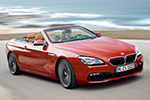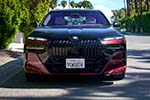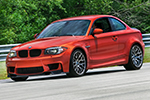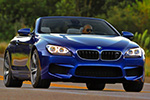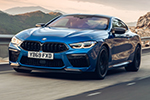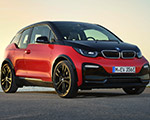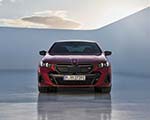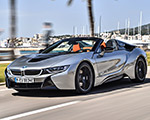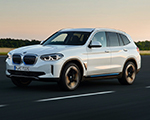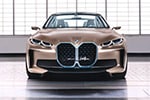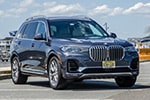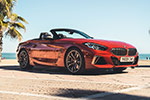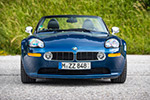After decades of waiting, the BMW M5 Touring is finally coming to the United States — marking the first time an M5 wagon will be officially sold here. It’s not the compact, corner-carving M3 Touring we all drooled over online. Instead, we got something bigger, louder, and a hell of a lot faster. After years of begging, BMW finally delivered. The M5 Touring is coming to the U.S. for the first time ever, ending decades of forbidden fruit heartbreak.
This is a 717-horsepower plug-in hybrid family hauler with a twin-turbo V8 under the hood and a real-deal M badge on the tailgate. It’s heavy. It’s expensive. It doesn’t have a split tailgate. After testing it on a mix of unrestricted Autobahn and winding country roads in mild 60°F weather, fitted with Michelin Pilot Sport 5S tires—I can’t stop thinking about it.
Specs That Pack a Punch
Under the hood, the M5 Touring mirrors its sedan sibling (the G90 M5) with an advanced plug-in hybrid drivetrain. The S68 4.4-liter twin-turbo V8 is paired with an electric motor integrated into BMW’s smooth ZF 8-speed automatic transmission. Together, they deliver an astonishing 717 horsepower and 738 lb-ft of torque, propelling this wagon from 0 to 60 mph in just 3.4 seconds. And thanks to its hybrid setup, the M5 Touring offers up to 25 miles of pure electric range – perfect for those quick, emissions-free city errands.
The M5 Touring matches the sedan in length and width but is slightly taller, thanks to its roof rails, so really the the main distinction between the M5 and the M5 Touring lies in the Touring’s larger rear cargo space. With the rear seats in the normal position, it offers a 17.7-cubic-foot luggage area, but it can expanded to 57.6 cubic feet when the rear seats are folded flat. Beyond this, the M5 Touring shares the same blend of luxury and technology found in the sedan version.
BMW M5 Touring
Good
- Lots of power
- Versatile, practical and spacious
- Electric driving mode
Bad
- Extremely heavy
- No split tailgate
- Lack of physical buttons for iDrive functions
The M5 Touring adds an extra 140 pounds, bringing its curb weight to 5,530 pounds, according to BMW’s specifications. Okay, there is a bit more weight, but in the grand scheme of things, it won’t make much of a difference, if any. The weight distribution is also a bit different, in fact, the M5 Touring gets closer to the 50:50 figure, compared to the M5 Sedan which starts with 54% on the front-axle and goes may be down to 52%, depending on the equipment.
A Driving Experience Tailored to Every Mood
BMW has designed the M5 Touring, just like the M5 sedan, with multiple driving personalities. The default Hybrid mode automatically balances the gasoline engine and electric motor for efficient yet powerful driving. The electric-only mode enables emissions-free trips, ideal for urban commutes, while the Dynamic and Dynamic Plus modes will crank up the settings further, optimizing the touring for track use.
There is also another cool mode, standard this time, called eControl. Essentially, if you’re ready for more spirited driving, this mode preps the battery and engine for optimal performance, ensuring you’re ready for high-speed bursts. This versatility allows the M5 Touring to switch from comfortable family cruiser to roaring beast with a tap on the screen.
In Electric Mode, the M5 runs solely on battery power, offering up to 25 miles (EPA-rated) or 64 km (WLTP) of range, with a top speed of 87 mph (140 kph). I didn’t exactly focus on efficiency during my test drive; despite pushing the M5 hard and making several high-speed Autobahn runs, I returned to base with almost the same electric range as when I started. For those curious about extreme use cases, you could fully deplete the battery on the Autobahn by staying in EV mode. Naturally, when the battery runs out, you lose access to the additional 194 horsepower from the electric motor.
With less review time than I had for the M5 Sedan, I didn’t manage a 0-60 mph test, but I expect comparable results—around 3.2 to 3.4 seconds, depending on surface conditions and tire temperature.
Steering & Suspension: Comfort Meets Precision
Much like the sedan, the new BMW M5 Touring features coil springs, fixed anti-roll bars, and adaptive dampers on all four corners. But it’s bringing in some tricks from the M3 Touring: an extra under-body bracing. The springs are the same as in the M5 sedan, but its tuning is different with revised bump stops and dampers rebound. The suspension is certainly a highlight, fine-tuned to manage both comfort and performance.
In Comfort mode, the Touring offers a smooth, cushioned ride, ideal for long trips or daily commutes. Switch to Sport mode, and the suspension stiffens up, delivering a more connected and agile feel. During my drive on a mix of unrestricted Autobahn and narrow country lanes — with temperatures hovering in the 60°F range — the Michelin Pilot Sport 5S tires provided excellent grip and stability, whether soaking up rougher backroad surfaces or carving through high-speed sweepers.
In the steering department, the M5 Touring lacks some of the feedback you’d expect from an M car. The inputs are precise, but there is just a general feel of a dead zone while the steering wheel is at 12 o’clock marker. Though the steering is somewhat muted, subtle road feedback trickles through, hinting at the M5 Touring’s underlying precision and agility.
To summarize it, this what I said in the M5 sedan review and it applies to the touring as well: “The steering feels light in the Comfort mode, and again, that’s by design. As with most modern BMWs, it only comes to life in its highest settings. The Sport steering adds heft and a bit more precision, yet not much feedback is coming through from the front wheels. Overall, I like it.”
There’s minimal body roll, which is crucial in a touring with this much weight, thanks to BMW’s use of reinforced braces and suspension tuning. Integral Active Steering, standard on the Touring, provides extra maneuverability, turning the rear wheels slightly to help navigate tight spaces and provide stability at high speeds. The rear-wheel steering allows the rear wheels to turn up to 1.5 degrees.
Brakes That Get the Job Done – and Then Some
Given its heft, the M5 Touring needs serious stopping power, and BMW’s optional 420 mm carbon-ceramic brakes are up to the task. These massive brakes provide ample stopping power, bringing the car to a halt smoothly and without fade, even under repeated hard braking.
On Germany’s rural backroads, where tight corners and sudden elevation changes demand quick pedal response, the combination of carbon ceramics and the sticky Michelin Pilot Sport 5S tires inspired confidence. On the Autobahn, they scrubbed off triple-digit speeds without drama — even with the extra 140 pounds over the sedan.
Hard braking does cause a bit of nose-dive, a natural result of the car’s weight, but the system is otherwise flawless. I haven’t tested the standard brakes, but for serious driving enthusiasts, the expensive carbon ceramics might be the way to go.
A Note on Exhaust Sound and OPF
The European M5 Touring includes an Otto Particulate Filter (OPF) to meet emissions standards, which slightly mutes the exhaust sound. In the U.S., where OPF isn’t required, the Touring comes with a louder and more engaging sound. On the Autobahn, the car felt satisfying even with the OPF (and with the fake sound turned on), but American buyers will appreciate the extra auditory punch.
Inside, switching to electric mode offers near silence, reinforcing the dual-nature experience BMW has crafted. Going from near-silent cruising to V8-fueled roars at the push of a button? That’s the kind of versatility some enthusiasts will appreciate. I made a point to measure the cabin noise using the NIOSH app on my iPhone, which provides fairly reliable readings. While it may not be a perfectly accurate test, I recorded an LAeq of 64.9 dB in Electric Mode and 71.2 dB in Hybrid Mode, both taken while driving on the Autobahn at around 80 mph.
A Few Cons
There are a few features missing from the M5 Touring that leave me wanting more. First, the lack of a split tailgate. Although it wasn’t expected, since the 5 Series Touring doesn’t have it either, it’s such an iconic BMW wagon feature that the product team could’ve pushed to retain it. Or at least included in the base price. Then there’s the absence of a carbon fiber roof—just like with the M3 Touring. It’s always a bit odd to see an M car without a standard or optional carbon roof, given what the brand represents. Would it have made a difference for weight or driving dynamics? Probably not, but it would’ve been great to have that sporty look.
Inside, I also miss the gear shifter. Simplifying the center console makes sense, but there’s something satisfying about gripping that M shifter and even “rowing” through gears yourself. Lastly, while iDrive 8.5 is faster and refined—especially with the M-specific graphics—the trade-off for those large screens is fewer physical buttons. I’m adjusting to the touch controls and voice commands, but I’m not exactly thrilled with the shift in user experience.
The M5 Touring: A Family Wagon with an M Badge
In a world dominated by SUVs, the BMW M5 Touring stands out as a family-friendly alternative with serious driving credentials. While the M3 Touring might be the enthusiast’s first choice, and ours as well, the new BMW M5 Touring adds practicality and extra space, making it viable as a family car that doesn’t sacrifice on performance. With nearly 15 cubic feet more cargo space than the sedan, it’s a fantastic choice for those who want an M car without giving up utility. Of course, a plug-in hybrid SUV like the X5 50e might offer more cargo space – 71.2 cubic-feet of cargo space with the rear seats folded – but the driving experience will also be completely different.
Final Verdict: Big, Fast, and Probably the Last of Its Kind
The 2025 BMW M5 Touring isn’t perfect. It’s heavy, it’s hybridized, and it’s not the M3 Touring we asked for. But it might be better.
It’s a rare thing—a true M car with room for real life. A car you can blast down the Autobahn in the morning, load up with gear in the afternoon, and commute silently through town at night. It’s equal parts absurd and brilliant. It’s also likely the last V8 M wagon we’ll ever get.
If you’re one of the lucky few with $121,500 and a long roof itch to scratch, this is your moment. BMW made the M5 Touring for you. And honestly? I’d take it over the sedan in a heartbeat.
2025 BMW M5 Touring FAQ – Specs, Performance, and U.S. Release
Yes. The 2025 BMW M5 Touring will be officially sold in the United States for the first time, ending decades of wagon enthusiasts waiting for an M5 long roof.
It delivers 717 horsepower and 738 lb-ft of torque from a 4.4-liter S68 twin-turbo V8 paired with an integrated electric motor.
BMW estimates 0–60 mph in approximately 3.4 seconds, with independent testing likely to confirm times between 3.2 and 3.4 seconds.
The plug-in hybrid system offers up to 25 miles (EPA estimate) of all-electric driving, or 64 km according to WLTP standards.
With the rear seats up, cargo capacity is 17.7 cubic feet. Folding the rear seats expands space to 57.6 cubic feet.
The test model was fitted with Michelin Pilot Sport 5S performance tires, providing excellent grip on both Autobahn and country roads. BMW also offers OEM tires from Hankook and Pirelli.
Yes. The European model uses an Otto Particulate Filter (OPF) that slightly mutes exhaust sound. U.S. versions don’t require OPF, resulting in a louder, more engaging exhaust note.
Pricing starts at $123,900 before destination fees and options, as of August 2025.
2025 BMW M5 Touring
Exterior Appeal - 8
Interior Quality - 8
Steering Feedback - 8
Performance - 8
Handling - 8
BMWness/Ultimate Driving Machine - 7.5
Price Point - 7.5
7.9
For American BMW fans, this Touring model marks a historic moment, as the first M5 wagon to hit U.S. roads. It could also be the last, as the future of M models with internal combustion engines remains uncertain. For now, though, the M5 Touring claims a unique spot in the market as a performance hybrid business wagon that can tackle both the fast lane and family life.























































































